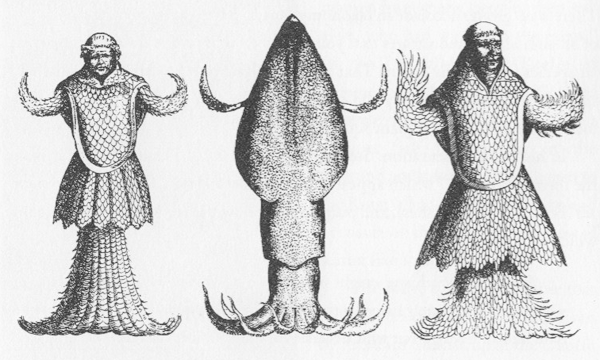Post by MoMo on Mar 4, 2012 9:46:24 GMT -6

The sea monk, or sometimes monk-fish, was the name given to a sea animal found off the eastern coast of the Danish island of Zealand almost certainly in 1546. It was described as a "fish" that looked superficially like a monk. It was mentioned and pictured in the fourth volume of Conrad Gesner's famous Historia Animalium. Gesner also referenced a similar monster found in the Firth of Forth, according to Boethius, and a sighting off the coast of Poland in 1531.
The sea monk was subsequently popularised in Guillaume du Bartas's epic poem La Sepmaine; ou, Creation du monde, where the poet speaks of correspondences between land and sea (emphasis added):
"Seas have (as well as skies) Sun, Moon, and Stars;
(As well as ayre) Swallows, and Rooks, and Stares;
(As well as earth) Vines, Roses, Nettles, Millions,
Pinks, Gilliflowers, Mushrooms, and many millions
of other Plants lants (more rare and strange than these)
As very fishes living in the Seas.
And also Rams, Calfs, Horses, Hares, and Hogs,
Wolves, Lions, Urchins, Elephants and Dogs,
Yea, Men and Mayds; and (which I more admire)
The mytred Bishopand the cowled Fryer;
Whereof, examples, (but a few years since)
Were shew'n the Norways, and Polonian Prince."

In the early 1850s, Danish zoologist Japetus Steenstrup suggested that the sea-monk was a giant squid, a theory more recently popularised by writer Richard Ellis. Cryptozoologist Bernard Heuvelmans believed the report was based on the discovery of an errant walrus. More recently, it has been suggested that it was an angel shark Squatina squatina, which is commonly called monkfish in English or munk in Norwegian.[1] Other suggested suspects for the sea monk include a grey seal, a hooded seal, a monk seal, or a hoax such as a Jenny Haniver.






